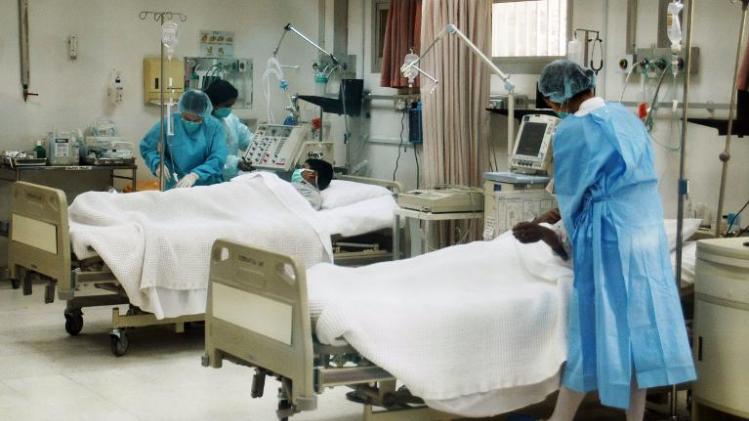
Scientists say that if all smokers in the world switched from cigarettes to electronic cigarettes, it could save millions of lives.
In the UK there are currently about 100,000 deaths per year attributable to smoking, worldwide it is estimated to be more than five million.
Now researchers are hopeful that an increasing use of e-cigarettes could prevent some of these deaths.
But some groups warn that e-cigarettes could normalise smoking.
An estimated 700,000 users smoke e-cigarettes in the UK, according to Action on Smoking and Health. Some users combine “vaping”, as it is often called, with traditional cigarettes while others substitute it for smoking completely.
E-cigarettes have also recently be found to be just as effective as nicotine patches in helping smokers quit.
Future hope
Rather than inhaling the toxic substances found in tobacco, e-cigarette users inhale vaporised liquid nicotine.
Robert West, professor of health psychology at University College London, told delegates at the 2013 E-Cigarette Summit at London’s Royal Society that “literally millions of lives” could be saved.
“The big question, and why we’re here, is whether that goal can be realised and how best to do it… and what kind of cultural, regulatory environment can be put in place to make sure that’s achieved.
“I think it can be achieved but that’s a hope, a promise, not a reality,” he said.
A revolution
This view was echoed by Dr Jacques Le Houezec, a private consultant who has been researching the effects of nicotine and tobacco.
He said that because the harmful effects of its main comparator, tobacco, e-cigarette use should not be over-regulated.
“We’ve been in the field for very long, this for us is a revolution
“Every adolescent tries something new, many try smoking. I would prefer they try e-cigarettes to regular cigarettes.” Dr Le Houezec added.
Many are now calling for the industry to be regulated. An EU proposal to regulate e-cigarettes as a medicine was recently rejected, but in the UK e-cigarettes will be licensed as a medicine from 2016.
Konstantinos Farsalinos, from the University Hospital Gathuisberg, Belgium, said it was important for light regulation to be put in place “as soon as possible”.
“Companies are all hiding behind the lack of regulation and are not performing any tests on their products, this is a big problem.”
Prof Farsalinos studies the health impacts of e-cigarette vapor. Despite the lack of regulation, he remained positive about the health risks associated with inhaling it.
Healthy rats
E-cigarettes are still relatively new, so there is little in the way of long-term studies looking at their overall health impacts.
In order to have valid clinical data, a large group of e-cigarette users would need to be followed for many years.
Seeing as many users aim to stop smoking, following a large group of e-smokers for a long period could be difficult.
But in rats at least, a study showed that after they inhaled nicotine for two years, there were no harmful effects. This was found in a 1996 study before e-cigarettes were on the market, a study Dr Le Houezec said was reassuring.
Concern about the increase in e-cigarette use remains.
The World Health Organization advised that consumers should not use e-cigarettes until they are deemed safe. They said the potential risks “remain undetermined” and that the contents of the vapor emissions had not been thoroughly studied
The British Medical Association has called for a ban on public vapingin the same way that public smoking was banned.
They stated that a strong regulatory framework was needed to “restrict their marketing, sale and promotion so that it is only targeted at smokers as a way of cutting down and quitting, and does not appeal to non-smokers, in particular children and young people”.
Ram Moorthy, from the British Medical Association, said that their use normalizes smoking behavior.
“We don’t want that behavior to be considered normal again and that e-cigarettes are used as an alternative for the areas that people cannot smoke,” he told BBC News.
But Lynne Dawkins, from the University of East London, said that while light-touch regulation was important, it must be treated with caution.
She said that e-cigarettes presented a “viable safer alternative” to offer to smokers.
“We don’t want to spoil this great opportunity we have for overseeing this unprecedented growth and evolving technology that has not been seen before, We have to be careful not to stump that.”
Source: BBC news






 U.S. health regulators on Wednesday approved a drug to treat a rare and aggressive form of non-Hodgkin lymphoma developed by Johnson & Johnson and Pharmacyclics Inc, becoming the second drug that had received the FDA’s new breakthrough therapy designation to gain approval.
U.S. health regulators on Wednesday approved a drug to treat a rare and aggressive form of non-Hodgkin lymphoma developed by Johnson & Johnson and Pharmacyclics Inc, becoming the second drug that had received the FDA’s new breakthrough therapy designation to gain approval.

 The world is losing the battle against diabetes as the number of people estimated to be living with the disease soars to a new record of 382 million this year, medical experts said on Thursday.
The world is losing the battle against diabetes as the number of people estimated to be living with the disease soars to a new record of 382 million this year, medical experts said on Thursday.
 Efforts by the federal government to curtail capital flights from the country in form of medical tourism received a boost Wednesday, as the only Indian specialist hospital in Nigeria, Primus International Super Specialty Hospital announced a downward review of all its medical charges to 30 percent, including offer of free consultancy in the month of November.
Efforts by the federal government to curtail capital flights from the country in form of medical tourism received a boost Wednesday, as the only Indian specialist hospital in Nigeria, Primus International Super Specialty Hospital announced a downward review of all its medical charges to 30 percent, including offer of free consultancy in the month of November.